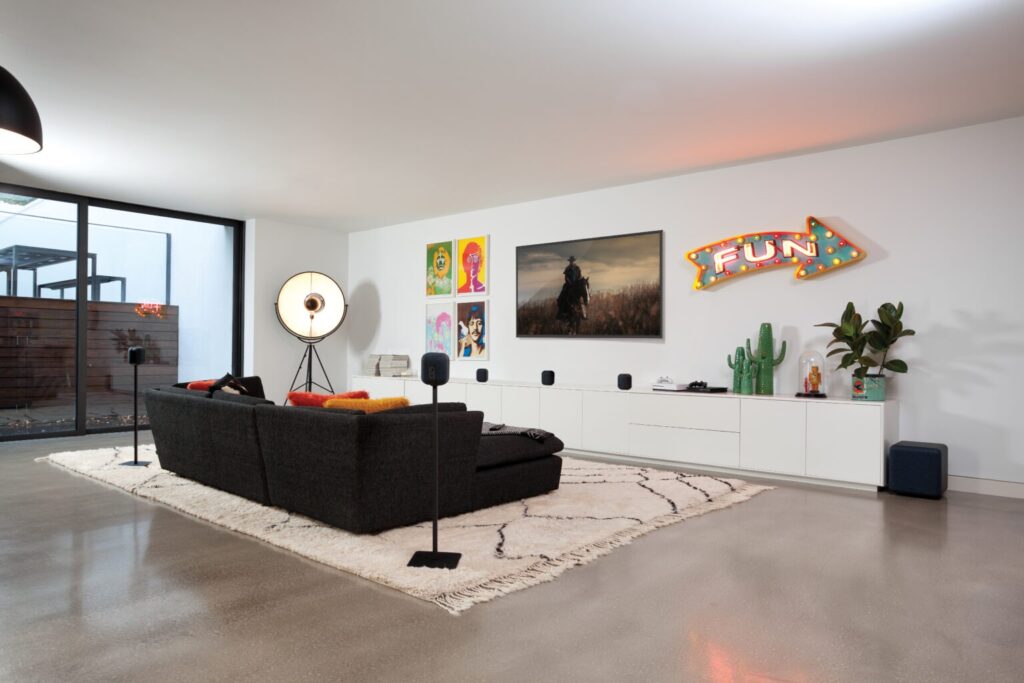Computerized room optimization in home theaters is currently implemented in state-of-the-art surround sound processors. A practical example for computerized loudspeaker and listener positioning can be given by the software program “Room Optimizer” which was developed in 1997.
This program allows computing the optimum locations for loudspeakers and listeners within a certain area which can be defined by the user. The optimization is performed by the simplex algorithm that is a mathematic optimization procedure using numerical approximation.
The suggestions for optimum listening positions are based on the minimum standard deviation of a combined short- and long-term spectrum. The spectra are obtained by using the image source model.
Furthermore, a cost parameter based on the standard deviation function indicates the deviation of the optimized frequency response from flat frequency response and thus characterizes the quality of the optimized spectrum perceived at the listening location.
Theory Behind the Room Optimizer
The program combines a room prediction model (image source model) with the simplex method which therefore has the advantage taking the sound field into consideration with its various reflections from all surfaces in the room. The image source model replaces surfaces reflections with all potential image sources for the listener. The resulting room response is obtained in the time domain and only consists of the contributing images.
The incident sound at the listening location is then the propagating image source wave to the listener attenuated by the propagation loss and the absorption coefficients of the contributing room boundaries. The model is most effective in rooms with solid surfaces since the image source model does not predict possible phase changes of reflections.
Scattering effects are not of interest in the low frequencies and can be neglected. Finally a Fourier transformation of the predicted impulse response in the time-domain gives the spectrum at the listing location.
Furthermore, an additional short-term spectrum is computed which is motivated by the perception of transient signals in rooms. The audio content in home theaters consists of various transient signals which tend to mask later reflections and therefore only the early reflections become audible for the listener. The short-term spectrum is obtained by a Fourier transform of the first 64 ms of the impulse response after the arrival of the direct sound.

An example!
Figure 1. illustrates the iterative optimization process to determine the optimum listener and loudspeaker locations. The upper picture represents the trial locations which are within the possible positions for loudspeakers and listeners. The limits for the loudspeaker and listening area within the optimization operations can be chosen by the user.
The trial locations move around the given areas until a reasonable result is obtained determined by an error parameter. The number of loudspeakers that have to be optimized is reduced to a minimum of “independent loudspeakers”. This means that due to mirror symmetries and displacement relationships, the positions of several loudspeakers in a surround sound arrangement are dependent on the so-called “independent loudspeaker”.
In this post, we went to the features of “Room Optimizer” software and examined its considerations. Items needed to mention audio improvements and other parameters will be published in future posts. These items will pave the way for creating a home theater with the highest quality.
The audio products offered in Saba intelligent systems, which include professional speakers and amplifiers and inacoustic cables with their great variety and high quality, make it possible to implement any type of equipment according to the relevant needs.



